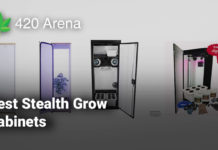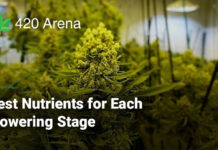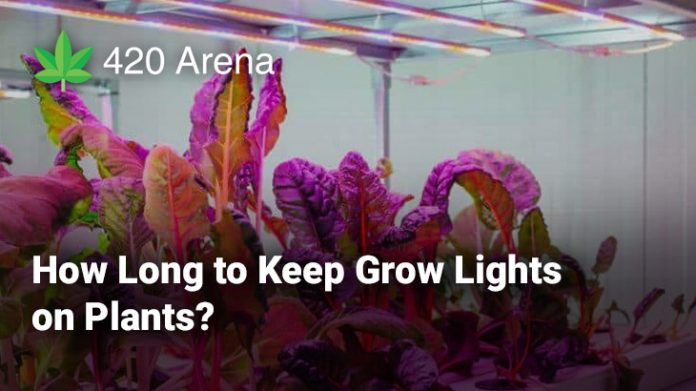When it comes to growing your own plants – and particularly cannabis/weed/marijuana plants, there are two ways in which you can grow them: Indoors and Outdoors. While outdoor growing of plants is seen as the ‘traditional’ and the ‘natural’ method, of late, there has been an increase in growers who prefer to grow their weed indoors.
Growing you weed (or any plant for that matter) outdoors would require complete dependence on the forces of nature. While you can still provide water to your plants manually, there are certain elements such as the sunlight (source of heat and light) and air, which the plants need, the absence (or excess) of which would hamper its growth! This is the reason why a number of growers are actually moving their plants indoors. When it comes to growing marijuana, indoor growing also gives you the advantage of privacy as most people do not want to be seen growing marijuana in public as despite legalizations it continues to be a social taboo in most places.
Growing Your Weed Indoors: Why is it Better?
Growing weed indoors is always a better practice than when compared to growing it outdoors because when it comes to a controlled environment indoors, you can actually simulate the best possible scenario for your plant’s growth and you can provide just the optimal amount of light (and darkness), air and water so that the plant grows out to be just the way you want it to. For weed, ensuring optimal and best-case conditions can also affect the flavor as well as the effect that it has on the smoker!
Sunlight can actually be emulated using grow lights, air can be provided with the help of fans and proper ventilation while water can be provided manually by the grower. Grow lights, however, are the most important of the lot as they provide an artificial source for heat and light which are critical for the plants as they produce energy as well as pigments with the help of it. Grow lights help you with ensuring that the plants get sufficient amount of light and heat and in a way that it does not harm them either.
Moreover, most plants (especially weed) also require not only light but also periods of darkness where they can ‘rest’. Hence growing your weed indoors ensures that you can provide sufficient light at different phases of the growth of the plant as well as provide it with controlled amounts of air and water which are suitable for their growth. However, you need to understand the life cycle of your plant before you set up your grow light. Here’s a closer look:
Life Cycle of the Cannabis Plant and How Grow Lights Affect It!
The cannabis plant goes through several stages of growth and different people categorize it differently. However, while there are different estimates, we broadly categorize the growth cycle of your weed plant into seven different stages:
- The Seed Phase: This is basically the phase where your plant requires no grow lights at all! In the seed phase, it is still a seed and you are yet to sow it. The seed phase is important for the grower because one needs to ensure that they are growing only the female seeds because they are the ones which produce the buds. Most sellers would tell you if the seeds are male or female. Make sure you don’t plant male seeds along with the female seeds because they might act as a deterrent to the growth of the female plants.
- The Germination Phase: This is still a phase where you do not require any light. In fact, in this phase darkness is important. The soaked female seeds need to be kept in a moist yet dark place and soon enough you’ll see them sporting a very small taproot and the germinating seedling then needs to be kept in a container carrying healthy dirt/mud. The taproot needs to be facing the dirt and soon you will see that a new stem has begun to grow upwards.
- The Seedling Phase: This is the time you start using the grow lights. The marijuana seedling phase is achieved when the stem that has shot upwards begins to have two leaves which are facing up and will seek sunlight/grow lights. Eventually in this phase, you will have between four to eight leaves coming out. In this phase light is important – and more specifically, you need to provide light which is bluer in the spectrum. A simple CFL light of the blue spectrum will do – this light needs to be kept about 4 inches away from the plant and has to be kept on 18 hours a day and off for 6 hours a day.
- The Vegetative Phase: In this phase, you need to provide 15 to 18 hours of light on an average. The plant’s growth depends upon the amount of light it receives and the vegetative stage is the one where the plant begins to grow in size – a lot! If you think your plant is growing way too fast, you can reduce the grow light that you provide it by a couple of hours. It is in this phase that the stem thickens and a large number of leaves begin to sprout out!
- The Pre-Flowering Phase: Here, the duration of light that you provide your plant needs to be around 12 to 14 hours on an average and in this phase, you will see a clear difference between the male and the female plants. Growers need to ensure that they keep the female plants away from the male plants and hence create ‘Sinsemilla’ or plants ‘without seeds’ which have a high concentration of THC, the chemical which gives you the ‘high’ of weed.
- The Flowering Phase: At this phase, your plant requires 12 hours of light and 12 hours of darkness. The plant will also require nutrients (Phosphorus and Potassium based). The ‘flowering’ begins when the buds begin to produce white hairlike things called ‘Pistils’. This is the phase which will lead you into the harvesting phase where you can finally smoke the bud you’ve been growing patiently for so long!
- The Harvesting Phase: Continue to provide about 8 to 10 hours of light during this phase as well till you’ve finally chopped off every bit of the sweet, sweet bud that you’ve grown with such patience and such care over a really long time. It has to be dried for the next four to six days after which it would be ready to be smoked up!
The Importance of Darkness for Growing Cannabis Plants
While light is important when it comes to growing weed, it is also important to know that even darkness is pretty important. A very basic understanding of this would be that cannabis plants, which require 12 to 18 hours of light a day (depending on what phase of growth they are at) need some time to ‘rest’. Considering that a lot of energy is spent by the plants on processes such as photosynthesis and on the creation of various pigments which are essential for the growth of the plants, the plants need time to ‘rest’ during the dark/non-sunlight hours.
Photosynthesis is the process where sunlight (or the light from the grow light) is converted into energy and oxygen is released by the plants. This is basically also the process via which the plants respire. When you switch off the lights, the plants continue to respire, but they are not undergoing photosynthesis at that time. Growers must understand the fact that cannabis, the weed plant is a photoperiodic plant and that changes in the light alter the composition and concentration of THC (the chemical responsible for the psychoactive properties of weed). Furthermore, increased period of darkness is good during the flowering stage but bad during the earlier stages!
However, growers need to understand that a healthy growth cycle for cannabis plants requires that you provide uninterrupted darkness. If you are providing 12 hours of sunlight, you need to provide constant 12 hours of darkness – that would be better for the plant’s growth than light/dark/light/dark phases of six hours each. Similarly, during the earlier stages of growth you need to provide 18 hours of light but six uninterrupted hours of darkness! This is why most growers tend to prefer grow lights which come with timers.
Understanding the Factors That Influence the Grow Light
Lighting has to be of a specific kind during specific phases. Here are some things that you need to keep in mind before you set up your grow lights for your marijuana plants:
-
Understanding the Light Spectrum
The light spectrum is something that every grower really needs to understand. The sunlight that we see naturally is white to yellow in color. However, it is actually made up of lights of different wavelengths and plants require different kinds of lights during different cycles of their growth. For instance, blue light is great for a plant when it is going through a period of early growth and red light is for the rapid growth phases. A full-spectrum LED light is one of the best options that you can provide your plants with as it will ensure that all the colors are fairly represented and it usually comes with a switch that you can use to adjust for different growth stages. A full-spectrum light is the closest you can come to imitating the natural light of the sun for your plant.
-
Intensity of the Lights
Intensity of the lights is also quite important for those who are planning to grow their own weed indoors. This is measured in ‘foot candles’ and a normal plant would require somewhere around 50 to 1000 foot candles coming from either the sun or from a grow light. Basically, different plants have different needs and you need to understand your plant really well before you start growing it. If your plant requires less than 250 foot candles of light, you won’t need a big light source for it. Intensity can also vary depending upon the growth phase that your plant is in – usually, plants at an early stage have a higher need for intense light as opposed to plants at a later/mature stage of growth. You have to adjust the height of your lights based on these requirements.
-
Which phase of growth is your plant in?
You also need to consider the phase of growth your plant is at right now in order to provide proper lighting to it. Seedlings and newly germinated stages are the ones which require the highest amount of light. At least in the case of marijuana, you can provide up to 18 hours of light and 6 hours of darkness to the seedlings and newly germinated plants for a good growth. This is the phase where intense lighting is required. Then when you move on to the phases where the plant begins to grow the light requirement reduces from 18 hours to 16 to 12 hours and even to 10 hours (sometimes) in the last phases of the growth cycle.
-
What kind of plant are you growing?
Finally, you also need to know what kind of plant you are growing. Marijuana or Cannabis plant is a plant which requires a lot of light depending on what stage it is in. It requires a maximum of 18 hours a day and a minimum of about 12 hours a day at any given phase. However, there are some plants which thrive even on lesser amounts of light. Poinsettias, Kalanchoe, Spider Plants, Dracaena, Tomatoes, Creeping Fig, Peppers, Maidenhair, Fern and Parlor Palm are some plants which do not really have a high-light requirement. As opposed to them there are some plants which can withstand a large amount of light with relative ease, such as Spinach, Lettuce, Orchids, Cacti, Coleus, and Dieffenbachia.
Does More Light Mean More Growth?
No, more light does not always mean more growth. There are some plants like cactus which can thrive in high-light conditions and hence they do well in arid areas, but then there are most plants which cannot withstand these large volumes of light. Growers need to be careful and alert about ensuring that they provide enough dark-time to the plants which require it. Providing too much light can lead to a huge problem – your plants might actually get burnt due to overexposure to light. Hence, this is something that you always need to be careful about! More light does NOT mean more growth.
Conclusion
We hope this article gave you a good insight into how to use grow lights in a manner that is beneficial for your plant’s growth and helped you understand how you need to set up the light in a different manner and for different timings during different phases of your marijuana plant’s growth cycle. Make sure to use this knowledge when you grow your own weed. We wish you all the best.
Happy Smoking!
Table of Contents

















![How to Use Carbon Filters in Your Grow Room [7 Best Carbon Filters for Grow Rooms in 2021] How to Use Carbon Filters in Your Grow Room](https://420arena.com/wp-content/uploads/2020/12/How-to-Use-Carbon-Filters-in-Your-Grow-Room-218x150.jpg)










